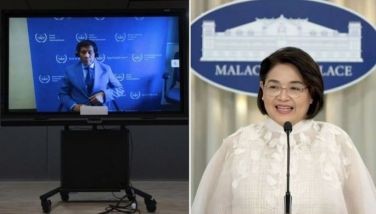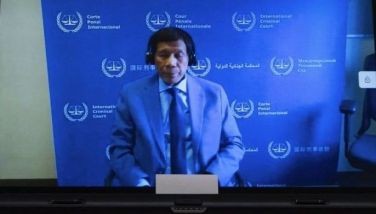Tighter

For seven years, the US Fed kept policy rates at close to zero. That was a decisive response to the peril of recession caused by the financial meltdown of 2008.
All these years, the world’s largest central bank, stubbornly held down rates to nurse the US economy back to health. The low interest rate kept the cost of money down and was the key weapon to encourage investments, create jobs and push consumer demand.
The rest of the world, similarly threatened by recession, hewed closely to the US interest rate regime. Cheap money policy was supplemented by programs that saw governments push money into their economies through large purchases of bonds, stocks and other assets (including those distressed assets caused by the irresponsibility of the major financial houses). These programs came under the generic label of “quantitative expansion” (QE).
Emerging economies, the Philippines particularly, benefitted from the QE programs. The world’s financial markets were awash with cheap money. Portfolio funds were scurrying about, looking for markets with affordable stocks to buy.
These seven years of cheap money pushed up our growth rate, strengthened our currency and financed a property boom – not the crap about “Daang Matuwid.”
At the peak of the QE programs, our growth rate in fact fell to just over three percent in 2011 because of the Aquino administration’s underspending. The public-private partnership (PPP) program moved at a snail’s pace while rich opportunities for fueling our own growth passed us. While the other emerging economies quickly moved to convert the abundant cheap cash into lasting domestic investments, the Aquino administration was busy impeaching a Chief Justice.
The 2011 drop in our growth rate was a momentum breaker. We have not fully recovered from that – not with the constant ineptitude of this administration.
The opportunities were precious and we let them pass because we had a do-nothing government. It pains to hear Aquino and his clone crow about the six percent growth we might achieve this year. That growth should have been in the nine percent range if this administration moved with the infra program on schedule, did not toy around with the budget by way of the criminal “disbursement acceleration program” and competently addressed rural poverty instead of wrongly boasting about rice self-sufficiency.
Now the period of cheap money, the real driver of our economic growth, is about to end. Pushing our economy to thrive despite the drag of massive poverty will become a more difficult task. Money has tightened.
Last week, the US Fed decided to raise the policy rates by 0.25 percent. Coming from the near-zero range, that is a shock.
Experts are now debating whether this represented a “dovish” or a “hawkish” disposition on the part of the all-powerful Fed. It is “dovish” if the Fed stops after the first hike. It is “hawkish” if the Fed intends to follow up with a succession of interest rate increases. In the period before the 2008 financial meltdown, the Fed raised interest rates 16 consecutive times.
Last week’s rate increase is a controversial one. The US economy is just struggling to recover. The signs of strength – job creation, resurgence of the property market and new start-ups – are really tentative. Moving the interest rates at this time could nip US recovery in the bud.
Indeed it could. In the last two days of trading last week, the New York stock exchange dropped substantially. It is the first time in a while that the exchange suffered three-digit drops in two consecutive trading days. That is not a good sign.
When the New York stock exchange sinks like that, the tendency is for markets across the globe to follow suit. And so we saw the markets in Asia and Europe generally follow New York’s lead.
If the Fed adopts a “hawkish” disposition in interest rates, the tightening will be most felt in the emerging markets – the same ones that benefited from the period of QE. As investments flow back to the US to take advantage of more attractive interest rates, stock prices in the emerging economies will take a slide.
Remember when, a few months ago, our stock market hit 8,000 points, President Aquino made an appearance at the trading floor to (unjustly) take personal credit for the market hitting record territory. While trying to grab the glory for our market performance, he committed what no sane mind would dare to: he predicted the market would hit 10,000 points soon.
Veteran stock traders could only drop their jaws at the President’s gall to forecast such a thing. The next day, the market dropped. It continued dropping since.
When the Fed adjusted rates last week, our stock exchange was struggling at the 6,800-point territory. Unless some truly startling piece of good news breaks, the Fed’s rate hike is expected to cause hot money outflows. Those outflows will put downward pressure on stock prices. Already, one major IPO was postponed in the face of market uncertainty.
We should have made hay while the sun was shining, while money was cheap.
All the PPP projects on the drawing board should have been launched in the previous years, when liquidity was abundant and borrowing was easy. They were not.
All the policy and bureaucratic roadblocks to investment inflows should have been cleared by proactive government action. They were not.
The optimistic growth projections for the next few years might have to be scaled back a bit because of a higher interest rate regime. When growth flags, this administration should take blame. It did not perform to par.
- Latest
- Trending





























